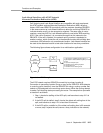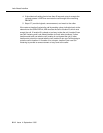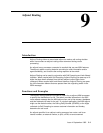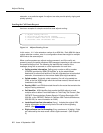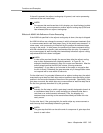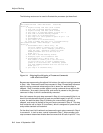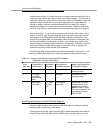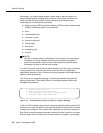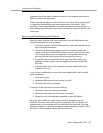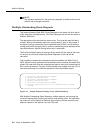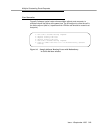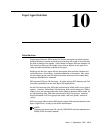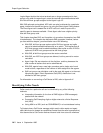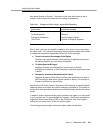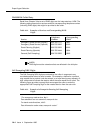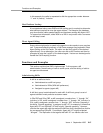
Functions and Examples
Issue 4 September 1995
9-7
judgement should be used in determining which of the treatment commands is
best for the particular application.
Finally, note that the adjunct can also decide to not route a call by rejecting (that
is, negatively acknowledging) the route request sent by the switch. Upon
receiving a route request rejection, the switch terminates the
announcement
or
wait-time
step that is being executed for the call and then continues with the next
vector step.
Receiving and Implementing the Call Route
When the switch receives a call route (destination) from the ASAI adjunct, the
switch first validates the route as follows:
1. The switch verifies the VDN’s COR permits the call to be terminated at the
adjunct-supplied destination.
2. The switch verifies that the adjunct-supplied information (destination
number, ACD split, TAC/AAR/ARS access code, etc.) for the route is valid.
This includes checking that the destination is compatible with the dial
plan, and that the options specified by the adjunct are correct.
3. If the ASAI adjunct specifies the Direct Agent Call (DAC) option, the
destination number (agent) must be logged into the adjunct-specified
ACD split.
4. If the destination for the call is external, the switch verifies the trunk is
available for the call.
If any of these conditions are not met, the route validation fails, and the switch
does the following:
1. Discards the route.
2. Notifies the ASAI adjunct that the route is invalid.
3. Continues with vector processing.
If the route is valid, the switch does the following:
1. Terminates vector processing immediately.
2. Notifies the ASAI adjunct that the route is accepted.
3. Routes the call to the destination specified by the ASAI adjunct.
When the call is routed, the caller hears normal call progress tones and
feedback. However, if the call is routed to an extension with no available call
appearances and no coverage path, the caller hears the busy tone. Any other
features that may be in effect at the adjunct-supplied destination (such as Send-
All-Calls or Call Forwarding) interact with the routed call.



